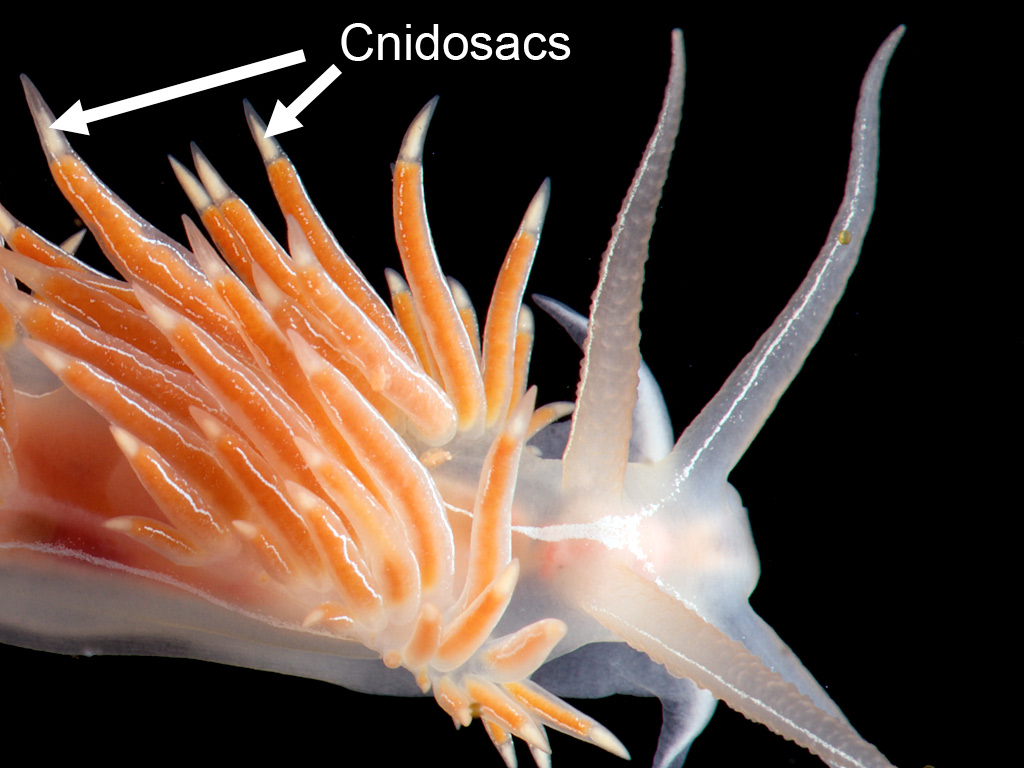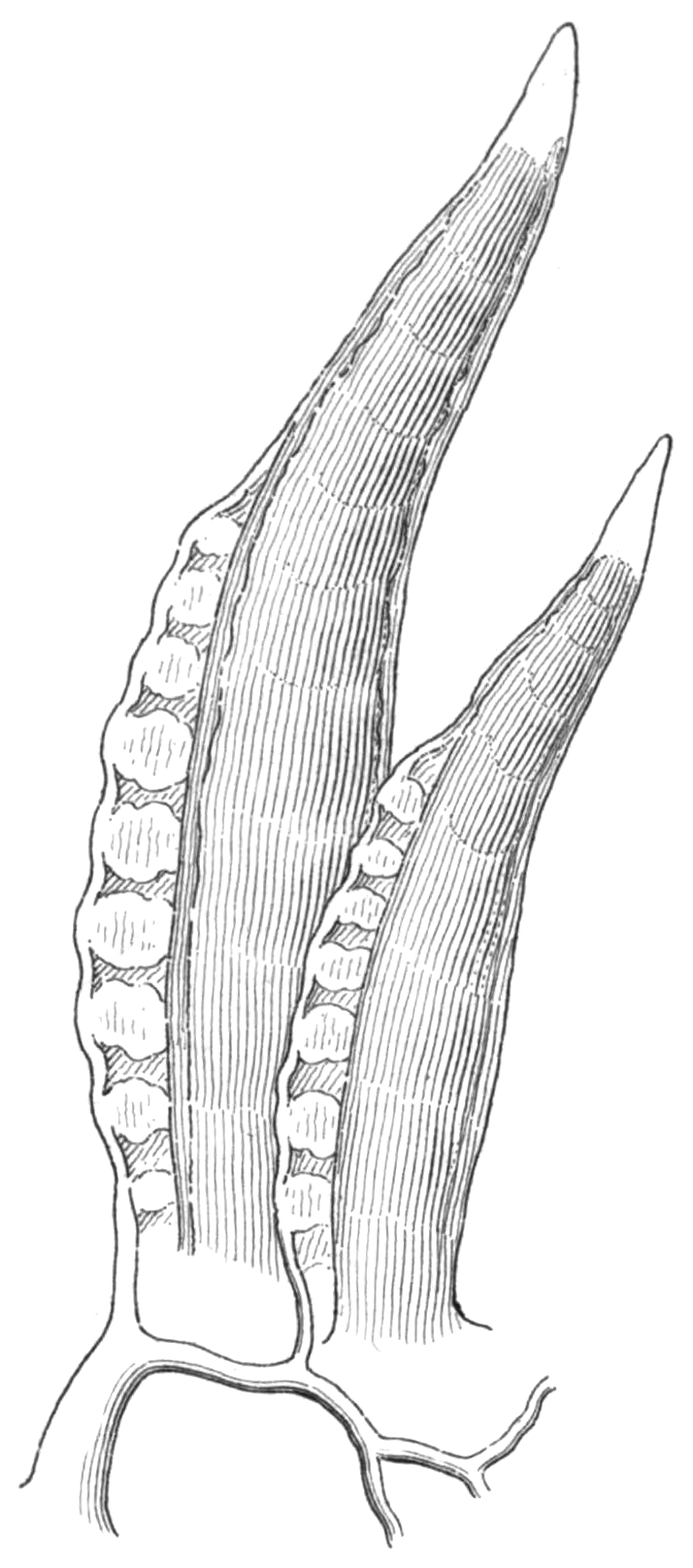|
Spurilla Neapolitana
''Spurilla neapolitana'', the Neapolitan spurilla, is a species of sea slug, an aeolid nudibranch, a marine gastropod mollusk in the family Aeolidiidae. It is native to the western Atlantic Ocean, the Caribbean Sea and the Mediterranean Sea. This species was first described as ''Eolis neapolitana'' by the Italian naturalist Stefano delle Chiaje in 1841. However, although some authorities quote the year as 1823, the species does not appear in the first volume of delle Chiaje's memoirs, which was published that year. The species was later reassigned to the genus '' Spurilla''. Distribution ''Spurilla neapolitana'' is found in shallow temperate waters in the Mediterranean Sea, the western Atlantic Ocean, the Caribbean Sea, the Gulf of Mexico and Baja California. Molecular studies have shown that this is a species complex consisting of at least three species. The type ''Spurilla neapolitana'' is found in the eastern Atlantic Ocean, from Cape Verde and the Azores to Portugal, and ... [...More Info...] [...Related Items...] OR: [Wikipedia] [Google] [Baidu] |
Animal
Animals are multicellular, eukaryotic organisms in the Kingdom (biology), biological kingdom Animalia. With few exceptions, animals Heterotroph, consume organic material, Cellular respiration#Aerobic respiration, breathe oxygen, are Motility, able to move, can Sexual reproduction, reproduce sexually, and go through an ontogenetic stage in which their body consists of a hollow sphere of Cell (biology), cells, the blastula, during Embryogenesis, embryonic development. Over 1.5 million Extant taxon, living animal species have been Species description, described—of which around 1 million are Insecta, insects—but it has been estimated there are over 7 million animal species in total. Animals range in length from to . They have Ecology, complex interactions with each other and their environments, forming intricate food webs. The scientific study of animals is known as zoology. Most living animal species are in Bilateria, a clade whose members have a Symmetry in biology#Bilate ... [...More Info...] [...Related Items...] OR: [Wikipedia] [Google] [Baidu] |
Marine (ocean)
The ocean (also the sea or the world ocean) is the body of salt water that covers approximately 70.8% of the surface of Earth and contains 97% of Earth's water. An ocean can also refer to any of the large bodies of water into which the world ocean is conventionally divided."Ocean." ''Merriam-Webster.com Dictionary'', Merriam-Webster, |
Feces
Feces ( or faeces), known colloquially and in slang as poo and poop, are the solid or semi-solid remains of food that was not digested in the small intestine, and has been broken down by bacteria in the large intestine. Feces contain a relatively small amount of metabolic waste products such as bacterially altered bilirubin, and dead epithelial cells from the lining of the gut. Feces are discharged through the anus or cloaca during defecation. Feces can be used as fertilizer or soil conditioner in agriculture. They can also be burned as fuel or dried and used for construction. Some medicinal uses have been found. In the case of human feces, fecal transplants or fecal bacteriotherapy are in use. Urine and feces together are called excreta. Skatole is the principal compound responsible for the unpleasant smell of feces. Characteristics The distinctive odor of feces is due to skatole, and thiols (sulfur-containing compounds), as well as amines and carboxylic acids. Skatole ... [...More Info...] [...Related Items...] OR: [Wikipedia] [Google] [Baidu] |
Symbiodinium
: ''This is about the genus sometimes called Zoox. For the company, see Zoox (company)'' ''Symbiodinium'' is a genus of dinoflagellates that encompasses the largest and most prevalent group of endosymbiotic dinoflagellates known. These unicellular microalgae commonly reside in the endoderm of tropical cnidarians such as corals, sea anemones, and jellyfish, where the products of their photosynthetic processing are exchanged in the host for inorganic molecules. They are also harbored by various species of demosponges, flatworms, mollusks such as the giant clams, foraminifera ( soritids), and some ciliates. Generally, these dinoflagellates enter the host cell through phagocytosis, persist as intracellular symbionts, reproduce, and disperse to the environment. The exception is in most mollusks, where these symbionts are intercellular (between the cells). Cnidarians that are associated with ''Symbiodinium'' occur mostly in warm oligotrophic (nutrient-poor), marine environments where ... [...More Info...] [...Related Items...] OR: [Wikipedia] [Google] [Baidu] |
Digestive Gland
The hepatopancreas, digestive gland or midgut gland is an organ of the digestive tract of arthropods and molluscs. It provides the functions which in mammals are provided separately by the liver and pancreas, including the production of digestive enzymes, and absorption of digested food. Arthropods Arthropods, especially detritivores in the Order Isopoda, Suborder Oniscidea (woodlice), have been shown to be able to store heavy metals in their hepatopancreas. This could lead to bioaccumulation through the food chain and implications for food web destruction, if the accumulation gets high enough in polluted areas; for example, high metal concentrations are seen in spiders of the genus ''Dysdera'' which feed on woodlice, including their hepatopancreas, the major metal storage organ of isopods in polluted sites. Molluscs The hepatopancreas is a centre for lipid metabolism and for storage of lipids in gastropods.Böer M., Graeve M. & Kattner G. (2006). "Exceptional long-term starvat ... [...More Info...] [...Related Items...] OR: [Wikipedia] [Google] [Baidu] |
Sea Anemone
Sea anemones are a group of predation, predatory marine invertebrates of the order (biology), order Actiniaria. Because of their colourful appearance, they are named after the ''Anemone'', a terrestrial flowering plant. Sea anemones are classified in the phylum Cnidaria, class Anthozoa, subclass Hexacorallia. As cnidarians, sea anemones are related to corals, jellyfish, tube-dwelling anemones, and ''hydra (genus), Hydra''. Unlike jellyfish, sea anemones do not have a Jellyfish#Life history and behavior, medusa stage in their life cycle. A typical sea anemone is a single polyp (zoology), polyp attached to a hard surface by its base, but some species live in soft sediment, and a few float near the surface of the water. The polyp has a columnar trunk topped by an oral disc with a ring of tentacles and a central mouth. The tentacles can be retracted inside the body cavity or expanded to catch passing prey. They are armed with cnidocytes (stinging cells). In many species, additional n ... [...More Info...] [...Related Items...] OR: [Wikipedia] [Google] [Baidu] |
Cnidocyte
A cnidocyte (also known as a cnidoblast or nematocyte) is an explosive cell containing one large secretory organelle called a cnidocyst (also known as a cnida () or nematocyst) that can deliver a sting to other organisms. The presence of this cell defines the phylum Cnidaria (corals, sea anemones, hydrae, jellyfish, etc.). Cnidae are used to capture prey and as a defense against predators. A cnidocyte fires a structure that contains a toxin within the cnidocyst; this is responsible for the stings delivered by a cnidarian. Structure and function Each cnidocyte contains an organelle called a cnida, cnidocyst, nematocyst, ptychocyst or spirocyst. This organelle consists of a bulb-shaped capsule containing a coiled hollow tubule structure attached to it. An immature cnidocyte is referred to as a cnidoblast or nematoblast. The externally oriented side of the cell has a hair-like trigger called a cnidocil, which is a mechano- and chemo-receptor. When the trigger is activated, the ... [...More Info...] [...Related Items...] OR: [Wikipedia] [Google] [Baidu] |
Cnidosac
A cnidosac is an anatomical feature that is found in the group of sea slugs known as aeolid nudibranchs, a clade of marine opisthobranch gastropod molluscs. A cnidosac contains cnidocytes, stinging cells that are also known as cnidoblasts or nematocysts. These stinging cells are not made by the nudibranch, but by the species that it feeds upon. However, once the nudibranch is armed with these stinging cells, they are used in its own defense. Description and functions The sea slugs within the nudibranch clade Aeolidida have protruding cerata (singular "ceras") on their dorsal surface. At the tip of each ceras is a small sac in which nematocysts (stinging cells) are stored. These nematocysts originate in the cnidarians (such as sea anemones, hydroids, jellyfish, corals, siphonophores, etc.) that are the food source for aeolid nudibranchs. Example ''Glaucus atlanticus'' is a blue pelagic aeolid nudibranch. Individuals in this species can be dangerous for humans to handle; the cnidosac ... [...More Info...] [...Related Items...] OR: [Wikipedia] [Google] [Baidu] |
Cerata
:''The tortrix moth genus ''Cerata'' is considered a junior synonym of ''Cydia. Cerata, singular ceras, are anatomical structures found externally in nudibranch sea slugs, especially in aeolid nudibranchs, marine opisthobranch gastropod mollusks in the clade Aeolidida. The word ceras comes from the Greek word "κέρας", meaning "horn", a reference to the shape of these structures. Cerata are dorsal and lateral outgrowths on the upper surfaces of the body of these nudibranchs. Function Cerata greatly extend the surface area of nudibranchs and aid in respiration, the process of gas exchange for metabolic use. Cerata are also used, in some cases, for attack and defense. In many aeolid nudibranchs, the digestive system extends into the cerata. These nudibranchs eat stinging celled animals (Cnidarians) such as anemones, hydroids and sea fans or Portuguese men o' war. The stinging cells or nematocysts are passed unharmed through the digestive system to cnidosacs at the tips of t ... [...More Info...] [...Related Items...] OR: [Wikipedia] [Google] [Baidu] |
Rhinophore
A rhinophore is one of a pair of chemosensory club-shaped, rod-shaped or ear-like structures which are the most prominent part of the external head anatomy in sea slugs, marine gastropod opisthobranch mollusks such as the nudibranchs, sea hares (Aplysiomorpha), and sap-sucking sea slugs (Sacoglossa). Etymology The name relates to the rhinophore's function as an organ of "smell". ''Rhino-'' means nose from Ancient Greek ῥίς ''rhis'' and from its genitive ῥινός ''rhinos''. "Phore" means "to bear" from New Latin ''-phorus'' and from Greek -phoros (φορος) "bearing", a derivative of ''phérein'' (φέρειν). Function Rhinophores are scent or taste receptors, also known as chemosensory organs situated on the dorsal surface of the head. They are primarily used for distance chemoreception and rheoreception (response to water current). The "scents" detected by rhinophores are chemicals dissolved in the sea water. The fine structure and hairs of the rhinophor ... [...More Info...] [...Related Items...] OR: [Wikipedia] [Google] [Baidu] |
Species Complex
In biology, a species complex is a group of closely related organisms that are so similar in appearance and other features that the boundaries between them are often unclear. The taxa in the complex may be able to hybridize readily with each other, further blurring any distinctions. Terms that are sometimes used synonymously but have more precise meanings are cryptic species for two or more species hidden under one species name, sibling species for two (or more) species that are each other's closest relative, and species flock for a group of closely related species that live in the same habitat. As informal taxonomic ranks, species group, species aggregate, macrospecies, and superspecies are also in use. Two or more taxa that were once considered conspecific (of the same species) may later be subdivided into infraspecific taxa (taxa within a species, such as bacterial strains or plant varieties), that is complex but it is not a species complex. A species complex is in most cas ... [...More Info...] [...Related Items...] OR: [Wikipedia] [Google] [Baidu] |








